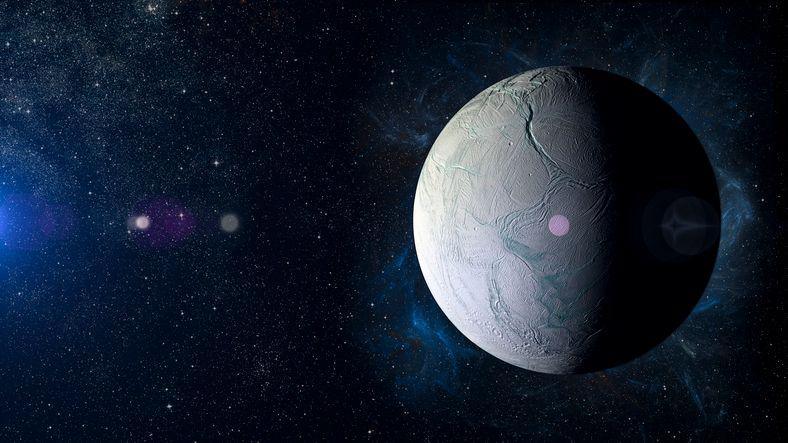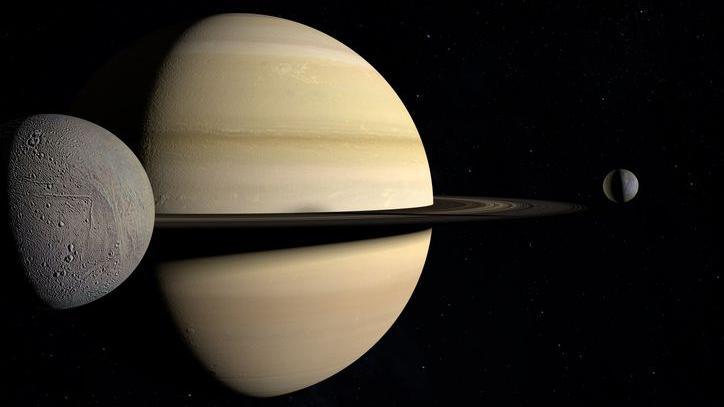Could life exist on one of Saturn's moons?

- Published
Scientists have long been trying to find signs of life on other planets, and a recent discovery could bring them one step closer to achieving that aim.
A new study suggests that one of Saturn's icy moons - called Enceladus - might be able to support life.
Experts have discovered that the moon is leaking heat from both of its poles.
They say this indicates that Enceladus could have the long-term stable environment needed for life to develop.
More space news
How a huge Sun storm has been affecting us on Earth
- Published6 days ago
Meet the children sending messages to space
- Published5 November
Moon astronauts could live in 'glass domes made of lunar dust'
- Published14 October
What did scientists find?

Saturn has 274 confirmed moons in its orbit
The new study, led by researchers from Oxford University and Southwest Research Institute and the Planetary Science Institute in Tucson Arizona, used data from Nasa's Cassini spacecraft mission.
The data showed a large amount of heat flow at Enceladus' north pole - and that the moon is losing heat from both poles.
Previously scientists thought that the heat loss was only happening at its active south pole.
Experts say that this new finding indicates that Enceladus has the long-term stability required for life to develop.
The team also found that the surface at the north pole was much warmer than predicted.
Did you know? Saturn has the most moons of any planet in our solar system.

Nasa's Cassini spacecraft spent thirteen years studying Saturn and its system
Dr Carly Howett from Oxford University said: "It is really exciting that this new result supports Enceladus' long-term sustainability, a crucial component for life to develop."
According to the researchers, the next important step is to look at whether Enceladus' ocean has existed long enough for life to develop.
At the moment, scientists are still unsure of its age.
Five facts about Enceladus

Enceladus completes one orbit of Saturn every 32.9 hours
1. The moon was first discovered by British astronomer William Herschel, who spotted Enceladus orbiting Saturn on August 28 1789.
2. Enceladus orbits Saturn at a distance of 148,000 miles and the small, icy moon has geyser-like fountains sending water vapour and ice particles into space.
3. As a result, spacecrafts have been able to capture samples of that spray and scientists have discovered that Enceladus has most of the chemical ingredients needed for life.
4. According to Nasa, pictures from the Voyager spacecraft in the 1980s showed that although this moon is small - around 310 miles across - its surface is very smooth in some places, and bright white all over.
5. Because Enceladus reflects so much sunlight, the surface temperature is very cold, at around -201 degrees Celsius.
